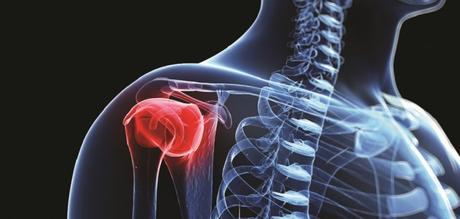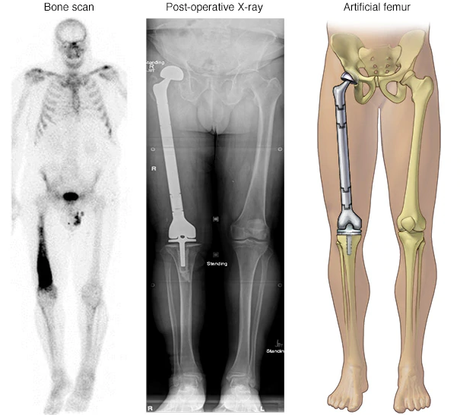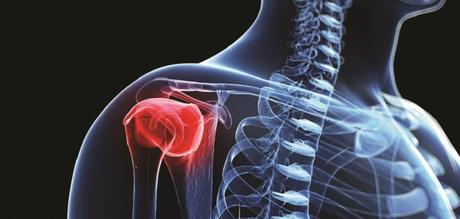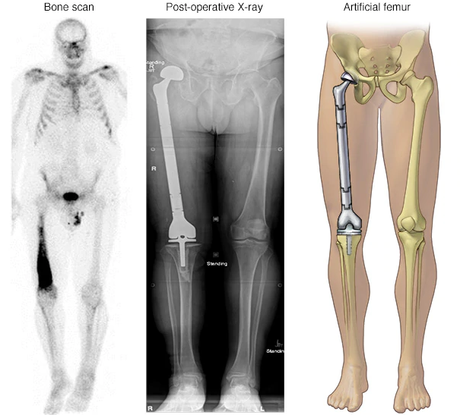
What Is Ayurvedic Treatment of Bone Cancer: In Ayurveda, cancer is recognized as arbuda. Arbuda is defined as the growing mass and formation of mass. According to Ayurveda, when prakruti, the body's basic constitution is not balanced, then a build-up of ama and imbalance of Vata, Pitta, and Kapha is produced, which leads to the diseases like cancer. Cancer also includes the involvement of Agni (digestive fire), Saptadhatus (body tissues), and Srotamsi (the channels of the body).
Therefore, Ayurveda always recommended balance and harmony in the body through herbs, diet, meditation, pranayama, and panchakarma.
In this article, we are going to discuss bone cancer and Ayurvedic herbs for the treatment of bone cancer.
Bones are living tissue in our bodies. It is a rigid organ that constitutes part of the vertebrate skeleton. Bones play an important role in our body. It protects various organs of the body, provides structure and support for the body, produces red and white blood cells, stores minerals, and enables mobility.
Bone cancer is the abnormal growth of cells and the formation of a mass of abnormal cells in bone. It can be either be primary bone cancer or secondary bone cancer. When it begins in the bone, it is known as primary bone cancer. When this bone cancer spreads to distant organs of the body such as lungs, breast, stomach, rectum, prostate, thyroid, kidney, it is known as secondary bone cancer.

Types of Bone Cancer
- Osteosarcoma: This is a very common type of bone cancer. It is more common in young adults and children in their legs and arm bones. Males are more prone to be affected by osteosarcoma.
- Chondrosarcoma: This type of cancer occurs in cartilage cells. It frequently encounters in legs, arms, and pelvis of the middle age peoples. The risk of this cancer increases with increased age.
- Ewing's tumor: Ewing's tumors of the bone occurs in the cavity of the bone. This cancer is primarily seen in the pelvis, legs, and arms of the children and adults.
- Chordoma: This type of bone cancer usually develops at the base of the bones of the skull and spine.
Causes of Bone Cancer
The cause of bone cancer is not yet known. Cancer occurs due to the abnormal growth of cells. The number of cancers may be due to hereditary and environmental factors or may be due to previous radiation exposure.
Risk Factors of Bone Cancer
There are many factors that increase the risk of developing bone cancer.
It includes:
- Inherited genes
- Injuries to bones
- Paget's disease
- Overgrowth of bone tissue (Multiple exostoses)
- Benign bone tumors (Multiple osteochondromas)
- Benign cartilage tumors (Multiple enchondromas)
- Bone marrow transplantation
- Radiation exposures
Signs and Symptoms of Bone Cancer
- Pain in the affected bone
- Swelling in the affected area
- Fractures and weakened bone
- Excessive weight loss
- Fatigue
Diagnosis of Bone Cancer
Imaging tests can help diagnose the location and size of bone tumors and other parts of the body where the tumor has spread. There are several types of imaging tests and doctors recommend the type of imaging test based on the patient's signs and symptoms.
It includes
- Bone scan
- Computerized tomography (CT)
- Magnetic resonance imaging (MRI)
- Positron emission tomography (PET)
- X-ray
The biopsy is also recommended by the doctor for the diagnosis of bone cancer.
Natural Herbs for the Treatment of Bone Cancer
- Ashwagandha (Withaniasomnifera)
The constitute Withaferin-A isolated from AshwagandhaWithania has anti-cancer activities, which help to fight against several types of cancers. Ashwagandha is non-toxic and it can be used with chemotherapy and radiation treatments to enhance the effectiveness of therapies. Ashwagandha also has antioxidant and anti-inflammatory properties. It promotes overall well-being and improves the immune system.
- Curcumin (Curcuma longa)
Curcumin is extensively used in Ayurvedic medicine for the treatment of cancer. The antioxidants present in curcumin can help reduce the free radicals in the body, which helps to promote health and immunity. Curcumin has anti-cancer activities because it affects various biological pathways involved in mutation, cell cycle regulation, tumorigenesis, apoptosis, and metastasis. Curcumin also has an anti-proliferation effect that helps treat many types of cancers. The anti-inflammatory property of this herb makes it effective in various allergies, infections, and inflammations. It also has various skin benefits.
- Coral (Parvalpishti)
Coral is obtained from red coral roots. It contains a pure form of calcium. It helps in building strong bones, which can make it an effective herb in the treatment of osteoporosis and bone cancer.
- Agate (Akkipishti)
Agate is a natural source of calcium and is used to maintain the normal functioning of the muscle. Thus it is very effective in the treatment of bone cancer, osteoporosis, and other conditions, that happen due to low calcium levels. It also acts as a heart tonic.
- Pearl (Muktapishti)
Pearl is a natural and rich source of calcium, thus it is very useful in bone cancer and osteoporosis. It also helps to reduce chronic blood pressure, diarrhea, gastritis, bleeding disorders, and burns. Pearl also has a cooling effect that can help to rejuvenate the body.
- Giloy (Guduchi)
Giloy possesses anti-cancer, anti-pyretic, anti-inflammatory, anti-oxidant, and immune-modulatory actions. It improves the immune system of the body naturally and also helps to manage calcium deficiency. Thus it is also effective in bone cancer. It decreases the duration of fever and infection. It also effective in the treatment of various health issues such as skin conditions, diabetes, improves indigestion, and stress and anxiety.
- Guggul (Commiphora Mukul)
Guggul helps to clear tumors and excess growth of cells. It has a rejuvenating property which helps in revitalizing cells. Guggul acts as a cardiac tonic and indirectly protects the heart from plaque accumulation on the artery wall and it also affects triglyceride and regulates cholesterol levels. It helps to promote metabolism.
- Amalaki (Emblica Officinalis)
Amalaki has many properties that can be beneficial in the treatment and prevention of cancer. It possesses antioxidant, anticarcinogenic, antitumor, antigenotoxic, and anti-inflammatory activities, etc. These help to reduce inflammation, promoting the immune system, and fight against the free radicals.
- Kumaizasa Bamboo
Kumaizasa Bamboo leaves have various activities such as antitumor activity, anti-oxygen radical activity, and antioxidant activity. Thus it is also useful in the management of bone cancer.
For more information, you can visit our website.
DR. Vikram Chauhan, MD - AYURVEDA is an expert ayurvedic doctor based in Chandigarh, India and doing his practice in Mohali, India. He is spreading the knowledge of Ayurveda - Ancient healing treatment, not only in India but also abroad. He is the CEO and Founder of Planet Ayurveda Products, Planet Ayurveda Clinic and Krishna Herbal Company. Write at - [email protected], Contact at - +91-172-521-4030 Websites - www.planetayurveda.com, www.alwaysayurveda.com
View more posts from this author

- Osteosarcoma: This is a very common type of bone cancer. It is more common in young adults and children in their legs and arm bones. Males are more prone to be affected by osteosarcoma.
- Chondrosarcoma: This type of cancer occurs in cartilage cells. It frequently encounters in legs, arms, and pelvis of the middle age peoples. The risk of this cancer increases with increased age.
- Ewing's tumor: Ewing's tumors of the bone occurs in the cavity of the bone. This cancer is primarily seen in the pelvis, legs, and arms of the children and adults.
- Chordoma: This type of bone cancer usually develops at the base of the bones of the skull and spine.
It includes:
- Inherited genes
- Injuries to bones
- Paget's disease
- Overgrowth of bone tissue (Multiple exostoses)
- Benign bone tumors (Multiple osteochondromas)
- Benign cartilage tumors (Multiple enchondromas)
- Bone marrow transplantation
- Radiation exposures
- Pain in the affected bone
- Swelling in the affected area
- Fractures and weakened bone
- Excessive weight loss
- Fatigue
It includes
- Bone scan
- Computerized tomography (CT)
- Magnetic resonance imaging (MRI)
- Positron emission tomography (PET)
- X-ray

